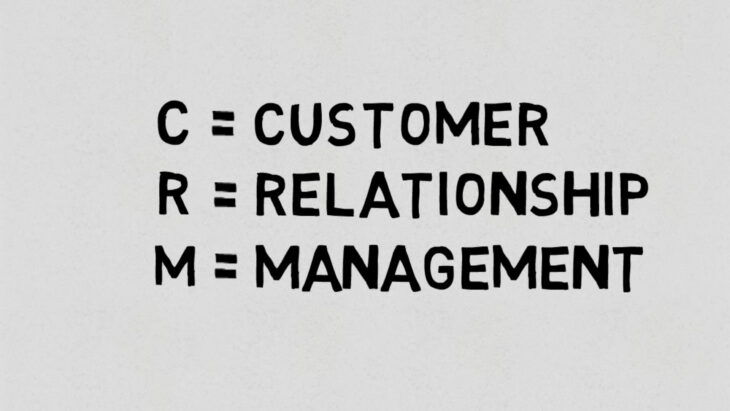Managing customer relationships and sales isn’t always easy. A Customer Relationship Management (CRM) system is a powerful tool that simplifies these tasks.
It offers a way to keep all your customer information in one place, making it easier to follow up, keep track of interactions, and ultimately sell more effectively.
I will share the key advantages of using CRM in the following sections.
Table of Contents
Toggle1. Centralized Customer Information
A CRM system consolidates all customer-related data into a single, accessible location. It is crucial for businesses aiming to streamline their operations and ensure that every team member has immediate access to the information they need.
From contact details to purchase history and interaction logs, having a unified source of data eliminates inefficiencies and fosters a more coordinated approach to customer management.
Determining this step is one of the essentials when starting a business.
Why Centralization Matters?
Centralized customer information simplifies decision-making processes. It allows for a more personalized approach to customer interactions, ensuring that every communication is informed by the latest data.
This not only improves the customer experience but also enhances the productivity of your team by reducing the time spent searching for information across disparate systems.
According to McKinsey & Company – Companies that leverage customer behavioral insights outperform peers by 85% in sales growth and more than 25% in gross margin
2. Improved Customer Service

CRM systems empower businesses to elevate their customer service quality. By providing instant access to comprehensive customer histories, service teams can tailor their support to meet individual needs, resolving issues more efficiently and building stronger relationships in the process.
Enhancing Service with CRM
The ability to quickly access detailed customer information enables service representatives to handle inquiries with a level of personalization and speed that significantly boosts customer satisfaction.
Additionally, CRM tools can automate routine service tasks, allowing teams to focus on more complex issues and deliver superior service.
A research from Salesforce says that 75% of customers expect consistent experiences across multiple channels (e.g., phone, online, in-person), and 73% are likely to switch brands if they don’t get it
3. Increased Sales
Implementing a CRM system can lead to a substantial increase in sales. It achieves this by organizing customer data in a way that highlights opportunities, streamlines the sales process, and enables more strategic outreach efforts.
Driving Sales Growth
CRM systems assist in identifying potential leads, prioritizing follow-ups, and customizing sales strategies based on detailed customer insights.
Automation of sales tasks further ensures that sales teams can concentrate on building relationships and closing deals, directly impacting the bottom line.
The analysis provided by Nucleus Research is showing us that Sales teams that use CRM can increase their productivity by up to 34%, and CRM systems have been shown to provide an average return on investment (ROI) of $8.71 for every dollar spent
4. Better Communication Within the Team

A CRM system fosters better communication and collaboration within teams by providing a shared platform for accessing and managing customer information.
This shared access ensures that everyone is on the same page, which is crucial for delivering a consistent customer experience.
Improved Team Collaboration
By providing a single platform for all customer-related information, CRM systems ensure that everyone in the organization has access to the same data. This not only eliminates confusion and miscommunication but also facilitates collaboration across departments.
Teams can easily share insights, coordinate on customer outreach strategies, and align on service delivery, ensuring a unified approach to customer engagement. You should also consider implementing the AI technology like chatbots and other advanced systems.
Businesses that promote collaborative working are 5 times as likely to be high-performing (Institute for Corporate Productivity).
5. Automation of Daily Tasks
The automation capabilities of CRM systems transform the efficiency of daily operations. By automating repetitive tasks, CRM allows teams to focus their efforts on more strategic activities that contribute to business growth.
Streamlining Operations through Automation
CRM automation tools can handle a wide range of routine tasks, from email marketing campaigns to appointment scheduling and lead nurturing. This not only frees up staff to focus on more complex, value-added activities but also ensures that critical tasks are performed consistently and without error.
The result is a more efficient operation that can scale more effectively, without a corresponding increase in overheads.
Marketing automation drives a 14.5% increase in sales productivity and a 12.2% reduction in marketing overhead (according to Nucleus Research).
6. Better Data Analysis and Reporting

CRM systems offer advanced data analysis and reporting tools that turn vast amounts of customer data into actionable insights. This capability is essential for making informed business decisions and tailoring strategies to meet market demands.
Leveraging Data for Strategic Advantage
The ability to analyze customer data in depth allows businesses to uncover insights that can drive strategy at every level. From identifying the most profitable customer segments to optimizing marketing campaigns and improving product offerings, the analytics provided by CRM systems are a powerful tool for strategic planning.
Customizable dashboards and reports mean that these insights are readily accessible, enabling quick, informed decisions that can significantly impact business success.
Data-driven organizations are 23 times more likely to acquire customers, 6 times as likely to retain customers, and 19 times as likely to be profitable as a result (McKinsey Global Institute).
7. Improved Customer Retention
A CRM system is instrumental in improving customer retention rates. By enabling personalized interactions and proactive service, it helps businesses build lasting relationships with their customers, encouraging loyalty and repeat business.
Strategies for Retention
CRM systems enable businesses to engage with their customers in a more personalized and meaningful way. By leveraging customer data, businesses can create targeted communication strategies that resonate with individual preferences and needs.
This personalized engagement, supported by timely and effective service, builds a strong sense of loyalty among customers, encouraging repeat business and long-term retention.
In a competitive marketplace, the ability to retain customers through personalized engagement and superior service is a key differentiator and a critical factor in long-term success.
Increasing customer retention rates by 5% increases profits by 25% to 95% (Harvard Business School).
FAQs
Which CRM is best?
Different CRM solutions have different features and benefits. You should choose the one that fits your business needs, budget, and preferences.
How does CRM collect data?
CRM collects data from various sources, such as customer interactions, social media, web analytics, email campaigns, surveys, and more. CRM then creates customer profiles that can be used by different teams within the company.
What are the 7 components of CRM?
The 7 components of CRM are:
- Strategy: The plan and vision for managing customer relationships and achieving business goals.
- Segmentation: The process of dividing customers into groups based on their characteristics, needs, and behaviors.
- Interaction: The communication and engagement with customers across multiple channels and touchpoints.
- Value: The assessment and measurement of the profitability and potential of each customer or segment.
- Retention: The activities and initiatives to increase customer loyalty and reduce churn.
- Satisfaction: The evaluation and improvement of the quality and performance of the products, services, and experiences
What are the phases of CRM?
The phases of CRM are:
- Acquisition: The process of attracting and converting new customers.
- Enhancement: The process of increasing the value and satisfaction of existing customers.
- Retention: The process of maintaining long-term relationships and loyalty with customers.



